I have the northing and easting coordinates of 17,306 ponds in Kent, England and the areas of almost all of the ponds in square metres. I am trying to create a 1 km grid which gives the mean pond area for each grid square while giving 0 values for grid squares with no ponds. I have been looking for questions similar to mine and have found one where a Thin Plate Spline algorithm is used to produce gridded rainfall data over the UK and then plot the surface onto this grid and write the data into a table (How to produce gridded output in R and eliminate grid squares that are not over land?).
I have been able to use this code on a small amount of my data to produce a similar result. Below is an example with a small amount of my data.
dput(head(KentPonds, 10))
structure(list(Eastings = c(572745.0557, 578793.9616, 573157.8562,
573664.2026, 572735.0952, 572738.741, 572742.0182, 572281.0791,
572267.6893, 573673.0182), Northings = c(179326.0157, 179249.0268,
179184.2076, 179173.6464, 179148.6766, 179123.1966, 179067.6473,
179050.8956, 178994.7816, 178996.945), PondArea_sqm = c(448L,
85L, 52L, 183L, 318L, 511L, 276L, 330L, 772L, 203L)), .Names = c("Eastings",
"Northings", "PondArea_sqm"), row.names = c(NA, 10L), class = "data.frame")
#looks like this
Eastings Northings PondArea_sqm
572745.1 179326.0 448
578794.0 179249.0 85
573157.9 179184.2 52
573664.2 179173.6 183
572735.1 179148.7 318
572738.7 179123.2 511
572742.0 179067.6 276
572281.1 179050.9 330
572267.7 178994.8 772
573673.0 178996.9 203
library(fields)
library(maptools)
library(gstat)
names(KentPonds) <- c("Eastings", "Northings", "PondArea_sqm")
fit <- Tps(cbind(KentPonds$Eastings,KentPonds$Northings),KentPonds$PondArea_sqm)
surface(fit)
xvals <- seq(500000, 650000, by=1000)
yvals <- seq(115000, 190000, by=1000)
griddf <- expand.grid(xvals, yvals)
griddf$pred <- predict(fit, x=as.matrix(griddf))
write.table(griddf, file="PArea1000_Grid(1).csv", sep=",", qmethod="double")
Using all 17,306 ponds it crashes my computer but more importantly I was hoping to be able to adapt it in some way so rather than predicted values produced by the tps I would get what I want i.e. the mean pond area for each grid square. I have been finding this very difficult so I would be very grateful if anyone could provide a solution or point me in the right direction.
Kind regards,
Aidan
